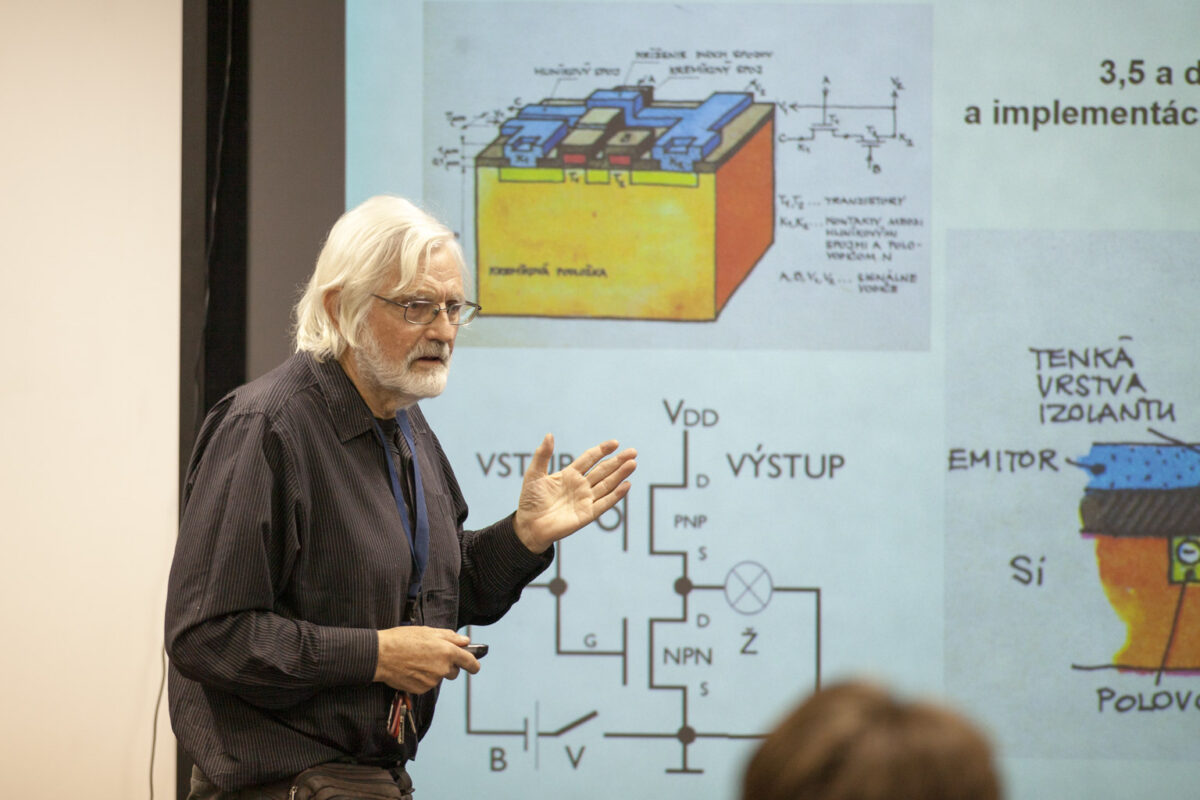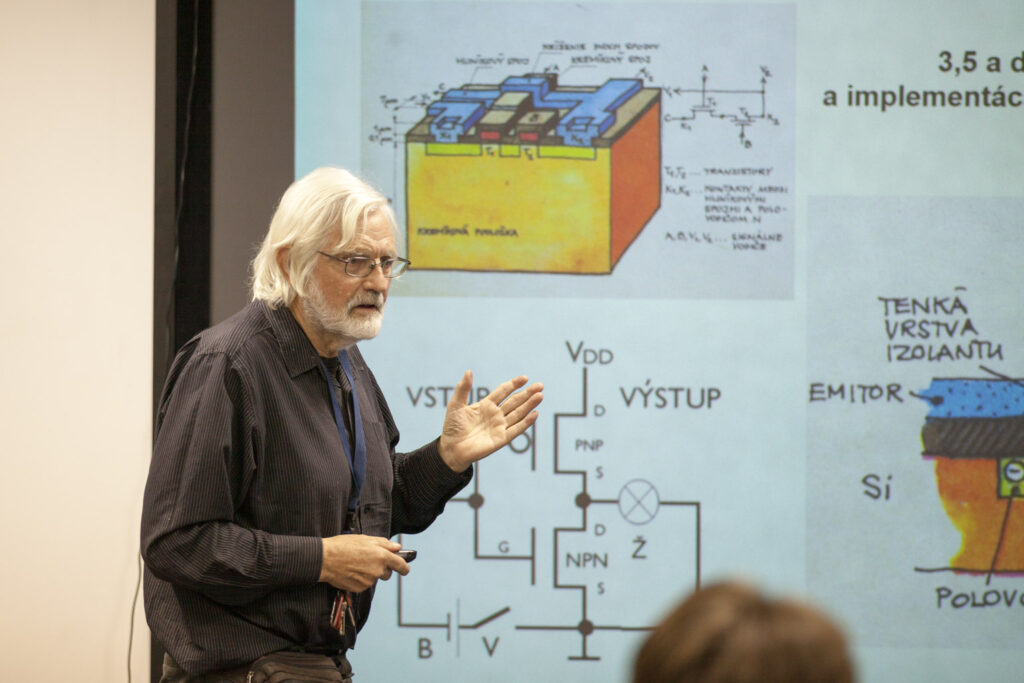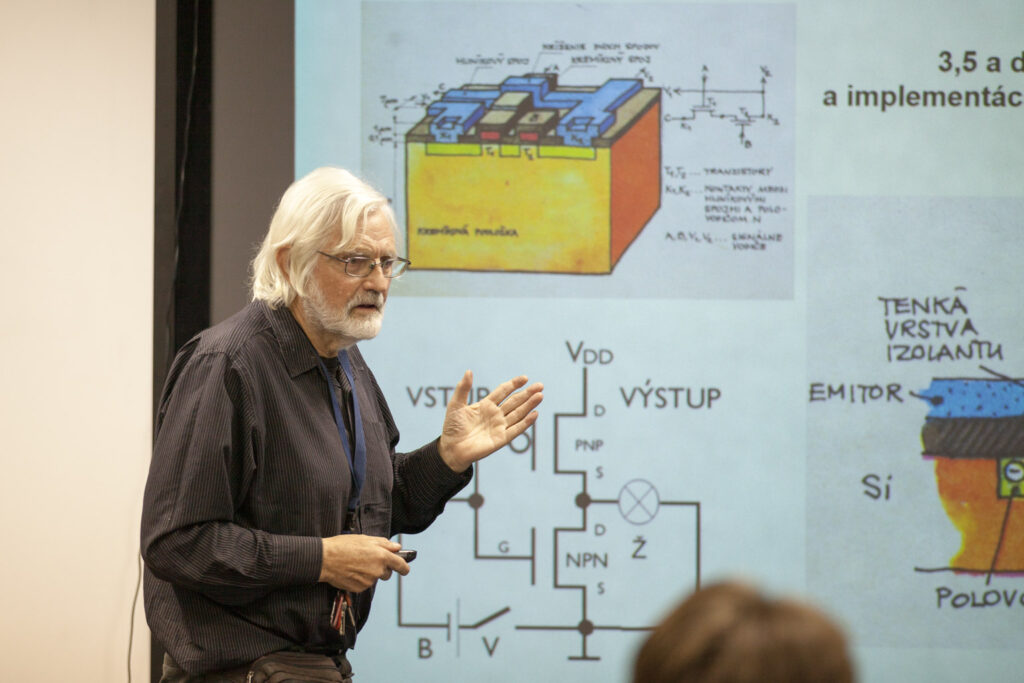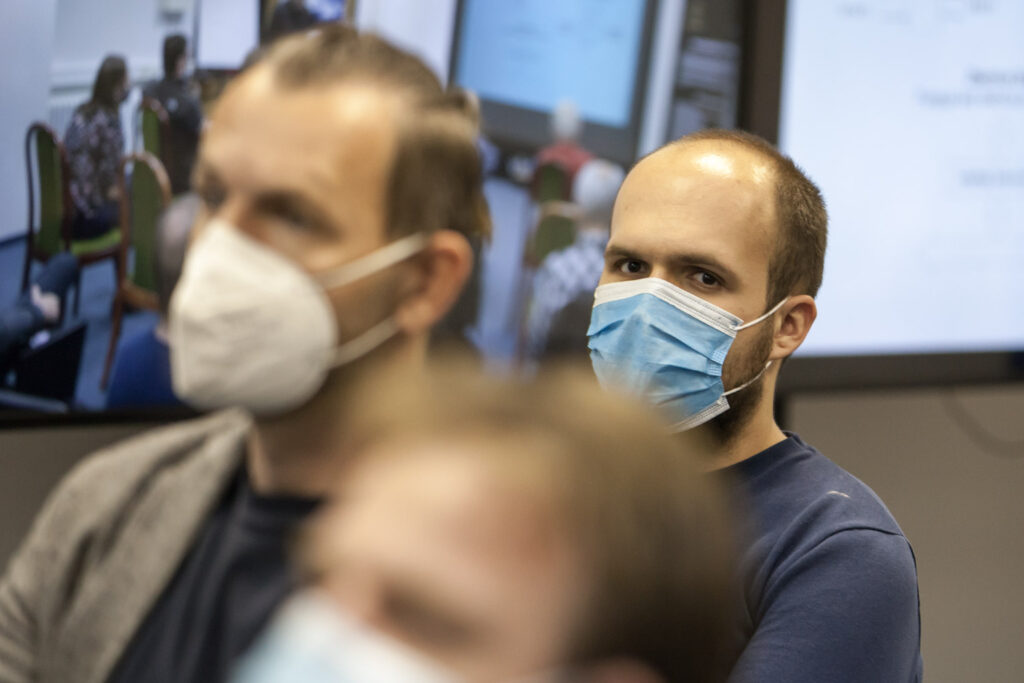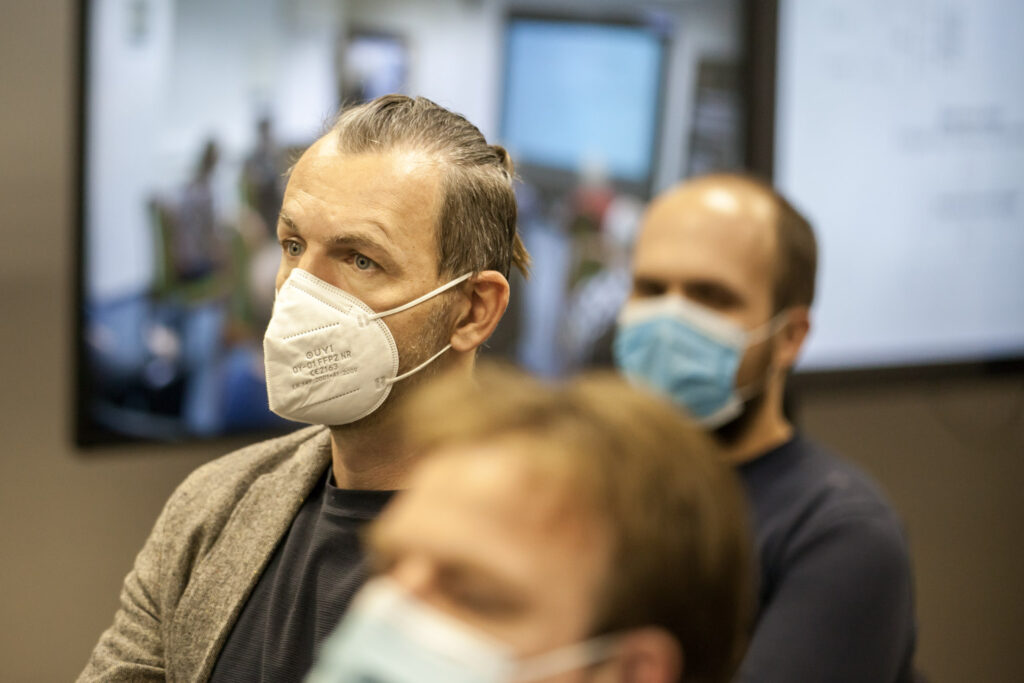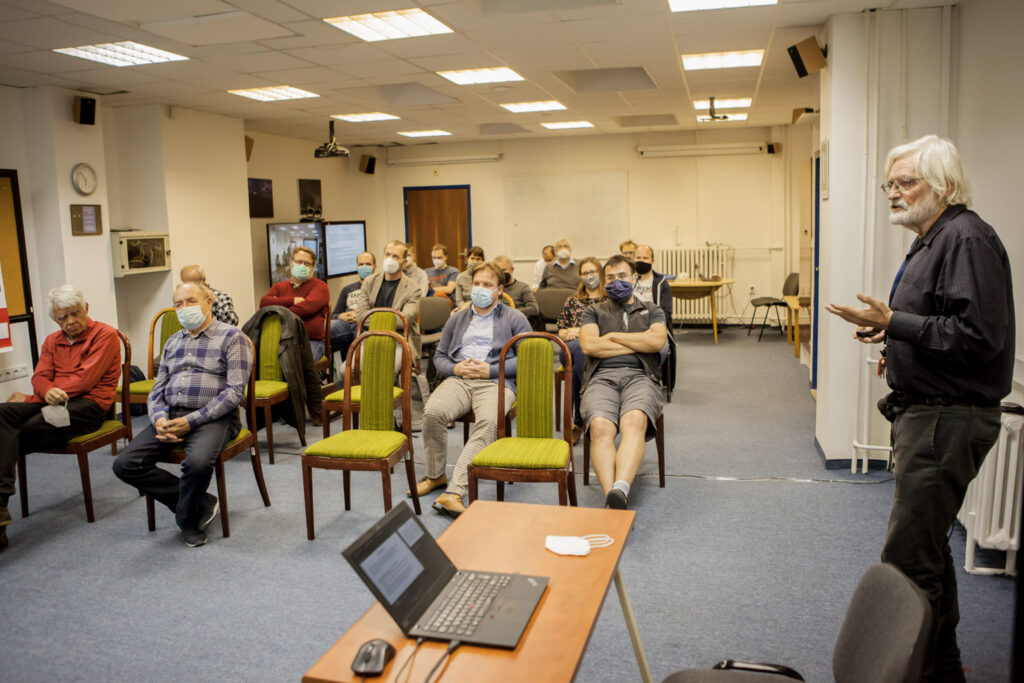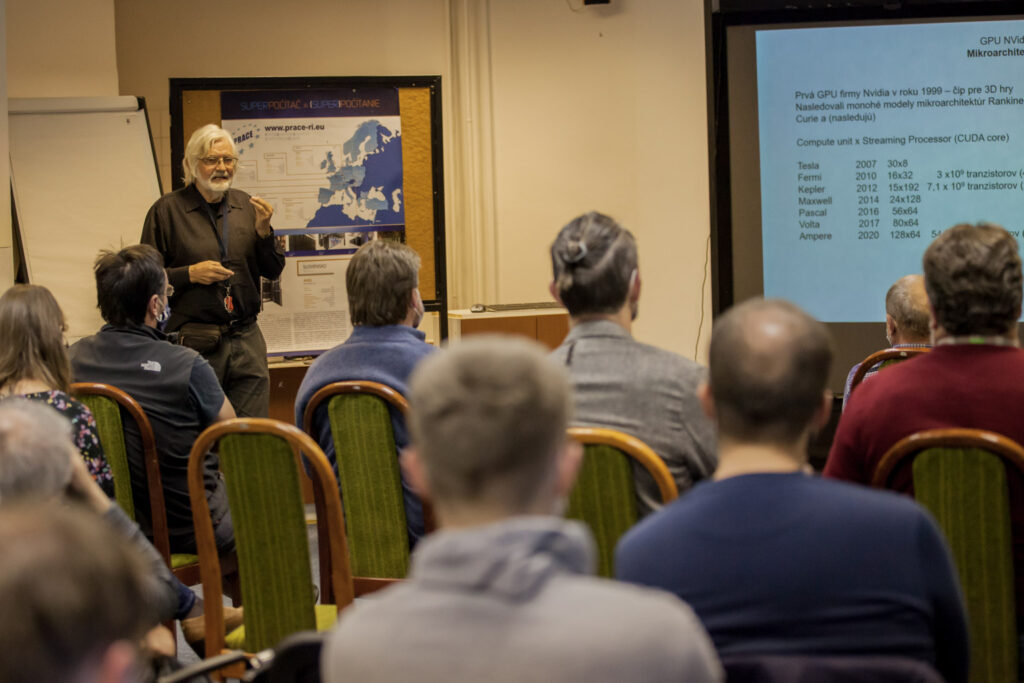Development of technology and computer architecture – from 1-processor serial computers to supercomputers
On October 26, 2021 the third lecture of our „Supercomputing in science“ series took place on the premises of the Computational centre of the Slovak Academy of Sciences Doc. Šperka, who is also responsible for the Computer museum, showed development of computer architectures and it’s components, such as CPU, GPU and RAM.
Computational power increased thanks to new technologies and innovations in semiconductor device fabrication and enabled doubling the number of components per integrated circuit every two years – this trend is described by the Moore’s law. However, we are now approaching physical limits in this area.
Another way of speeding up calculations is to use parallel approach, supported by today’s supercomputer architectures, including high-speed interconnecting network. Doc. Šperka described the history from the first parallel vector computers and Cray-1 supercomputer up to modern supercomputers.
Lecture series is a joint activity of the Computer museum COO SAS and National Competence Center for HPC. NCC, as the primary contact point for HPC in Slovakia, covers, among other things, educational and dissemination activities in this area.
You can watch the recording of the event on Facebook and YouTube and you can already register for our next lectures. Schedule and registration:
- 10. novembra 2021 o 17:00 – Operation systems in multiprocessor clusters
Dušan Bernát (Faculty of mathematics, physics and informatics, Comenius University) - November 23, 17:00 - Short guide to software parallelization
Jaroslav Suchánek (Biomedical Research Center, SAS) - December 7, 17:00 - Federated distributed computing
Ladislav Hluchý (Institute of Informatics SAS) - December 21, 17:00 - Modelling of 2D systems properties using the Quantum Monte Carlo methods
Ivan Štich (Institute of Physics SAS)
More information about the series
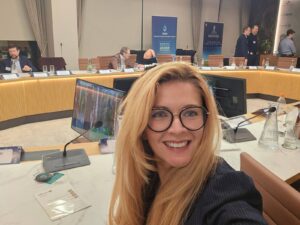 VICE and the Digital Twin at the Pre-Christmas Hydrogen Infoday 11 Dec - Dňa 10. decembra 2025 sme sa zúčastnili podujatia Predvianočný vodíkový Infoday v Bratislave. Súčasťou programu bola prezentácia VICE – Vertical Integrated Cyclic Energy, Hydrogen, vedená Laurie Farmerom a Luciou Malíčkovou.
VICE and the Digital Twin at the Pre-Christmas Hydrogen Infoday 11 Dec - Dňa 10. decembra 2025 sme sa zúčastnili podujatia Predvianočný vodíkový Infoday v Bratislave. Súčasťou programu bola prezentácia VICE – Vertical Integrated Cyclic Energy, Hydrogen, vedená Laurie Farmerom a Luciou Malíčkovou.  Strengthening Slovak–Romanian Cooperation and the Development of Scientific Partnership 8 Dec - Romania’s National Day is a significant historical milestone commemorating the Great Union of 1918, when Transylvania, Bessarabia, and Bukovina united with the Kingdom of Romania. This moment laid the foundations of the modern Romanian state and remains a powerful symbol of national identity and unity to this day.
Strengthening Slovak–Romanian Cooperation and the Development of Scientific Partnership 8 Dec - Romania’s National Day is a significant historical milestone commemorating the Great Union of 1918, when Transylvania, Bessarabia, and Bukovina united with the Kingdom of Romania. This moment laid the foundations of the modern Romanian state and remains a powerful symbol of national identity and unity to this day.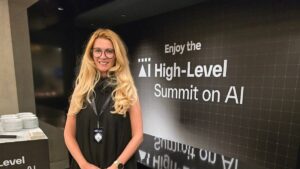 We Participated in the High-Level Summit on AI in Bratislava 2 Dec -
Zučastnili sme sa prestížneho High-Level Summit on AI – BratislavAI Forum 2025, ktorý predstavuje jeden z najvýznamnejších aktuálnych európskych príspevkov k formovaniu globálnej architektúry správy umelej inteligencie. Lucia Malíčková reprezentovala naše odborné kapacity v oblasti umelej inteligencie, dátových ekosystémov a digitálnych inovácií.
We Participated in the High-Level Summit on AI in Bratislava 2 Dec -
Zučastnili sme sa prestížneho High-Level Summit on AI – BratislavAI Forum 2025, ktorý predstavuje jeden z najvýznamnejších aktuálnych európskych príspevkov k formovaniu globálnej architektúry správy umelej inteligencie. Lucia Malíčková reprezentovala naše odborné kapacity v oblasti umelej inteligencie, dátových ekosystémov a digitálnych inovácií.
